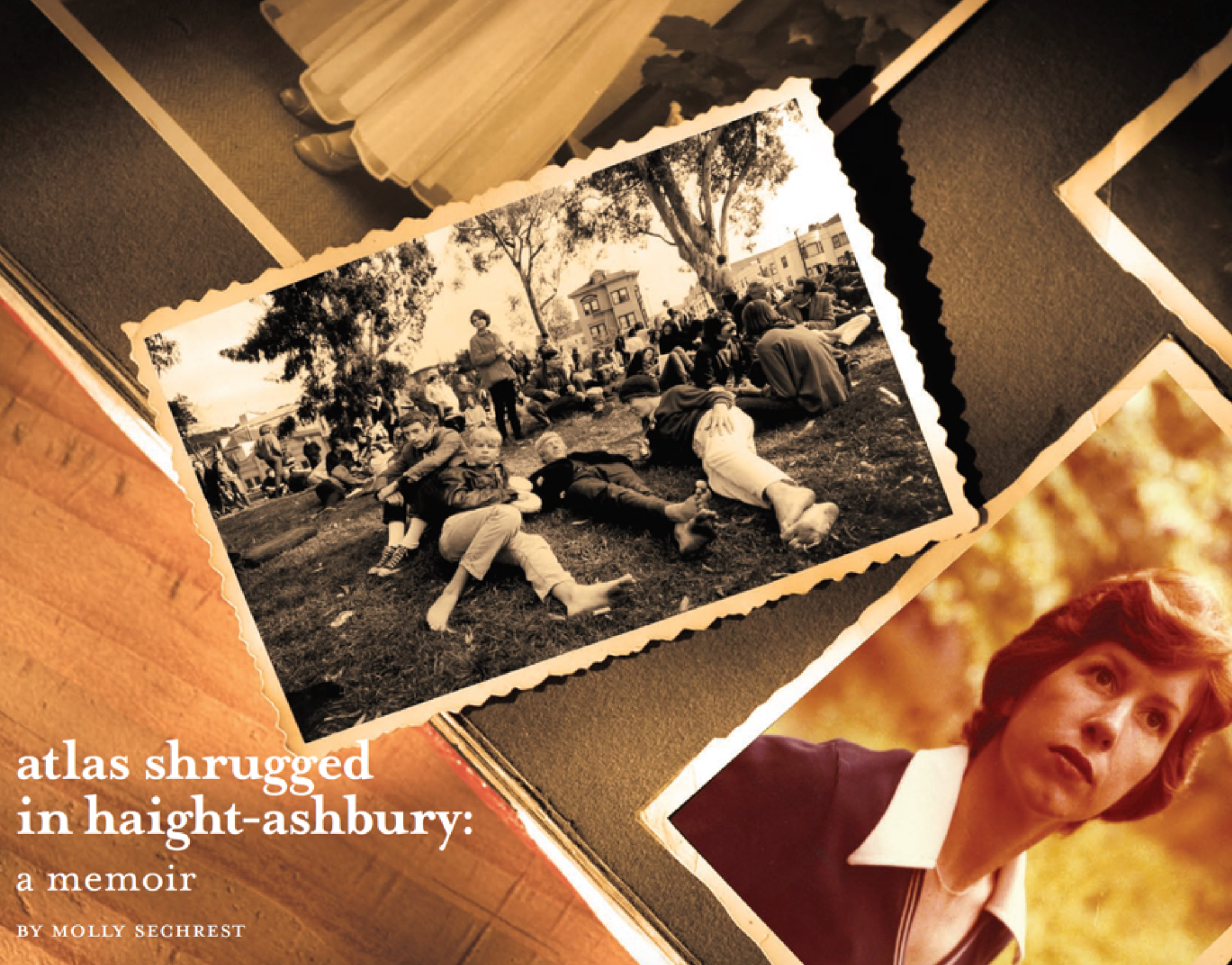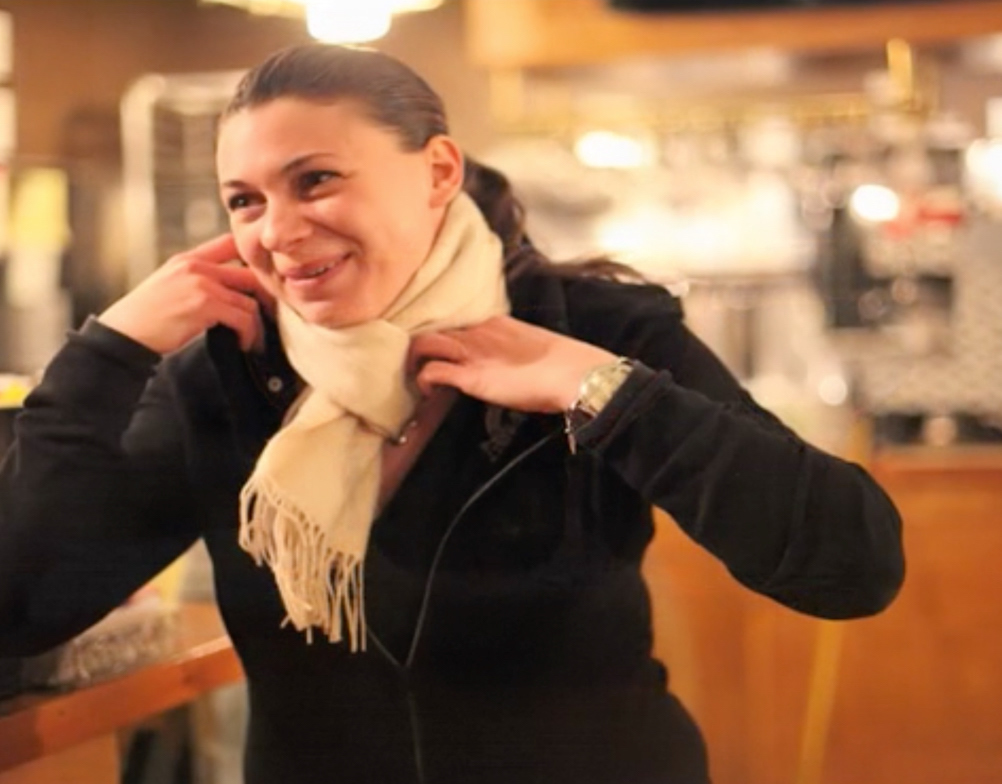Hampton Sides likes to say he was born to tell the story of Martin Luther King, Jr. and his assassin, James Earl Ray.
Hampton was 6 when his hometown snapped. His father worked for the Memphis law firm that represented King when the civil rights leader led protesters down Beale Street in support of the city’s striking sanitation workers, most of them black. As King’s march grew violent, riots broke out. Tanks and troops moved in to quell the roiling racial tension.
A week later, on April 4, 1968, Ray, perched in the window of a seedy flophouse, centered his rifle scope on King as he relished the day on the balcony of the Lorraine Motel — just outside Room 306. That night, Hampton’s father arrived home shaken and ordered the family’s evacuation. Hampton remembers fleeing in the back seat of his parents’ red Volkswagen Beetle and for decades, he felt haunted by the shame of having King killed in his city. It wasn’t until the release of Hellhound on His Trail that Hampton was finally able to exorcise that demon. Now he’s got another demon to deal with — one that hounds him on his trail as he makes the rounds plugging his new book.
Hampton takes his seat on the raised stage. He gazes over the auditorium to a low hum of lunchtime conversations and the crinkle of a hundred turkey and avocado clubs making their way out of waxed paper wrappers. He sits to the far right of three academics: one from Rhodes, another from Marquette, and a historian from Hampton’s alma mater, Yale. Hampton’s introduction is especially flattering. “Dr. Hampton Sides,” the moderator’s crisp baritone voice begins as he introduces the panel here in Memphis to discuss the “achievement gap” in American schools.
There’s just one thing: Forget the Ph.D. In a room full of academics — on a panel full of professors with cufflinks and handkerchiefs — Hampton doesn’t have a tie on, much less hold a doctorate. He’s on stage to give context to the conversation that’s bound to ensue: one rooted in race and the storied history of Hampton’s hometown. To say his thing, shut up and listen. The other panelists will cite Thomas Jefferson and Booker T. Washington. Hampton, the journalist, cites a lyric penned by songwriter John Hiatt for the city.
Maybe there’s nothin’ happenin’ here. Maybe there’s somethin’ in the air.
As he reads from his new narrative history about King’s assassin, James Earl Ray, Hampton slips in a snarky comment about his credentials — or rather lack of them. “Thanks for the Dr. thing,” he says as he leaves. “But it’s just Hampton. I do have a book out next month though.”
Not only does Hampton have a new book out, but Hellhound on His Trail: The Stalking of Martin Luther King, Jr. and the International Hunt for His Assassin is about to leap into The New York Times Top 10 — not his first. Ghost Soldiers, a World War II history, sold around a million copies; Blood and Thunder, about the Indian fighter Kit Carson and the conquest of the West, sold 250,000. Even as he’s penning bestsellers, Hampton finds time to write for the The New Yorker, to swim across the Mississippi river for Men’s Vogue, and to track down celebrity survivalist Bear Grylls for an Outside magazine cover story. In the weeks surrounding Hellhound’s spring release, Hampton does Fresh Air. Weekend Edition. Imus. Colbert. Tavis Smiley. CBS Sunday Morning.
And yet, here he is, feeling like he doesn’t fit in. Is he a journalist or a historian? Hampton’s tongue-in-cheek aside — Thanks for the Dr. thing, but it’s just Hampton. —sheds light on a gripe that’s long festered. Without that Ph.D., no matter how many bestselling historical narratives bear his name, he isn’t welcome inside the “the academy” (the American Historical Association, that is) and he stands a slim chance of winning a Bancroft Prize, the annual award for distinguished works on American history. That frustrates him. “It’d be great to see narrative history make more inroads in academics,” Hampton says. “To see history departments embrace it to enlighten their moribund dinge.” Dinge, as in, boring as dirt.
Hampton works hard at making history come alive on the page. In each of his books, he takes a filmmaker’s approach. Vivid scenes, multidimensional characters, dramatic action, conflict, paradox, irony and rich details distinguish his prose. It’s why his books have become staples on the The Times’bestseller list. In Hellhound’s first paragraph, Hampton sets the scene of a prison bakery “redolent with the tang of yeast,” where Ray prepares his escape in a bread box — the beginning of a nearly yearlong odyssey leading up to the bullet fired at King. The Times reviewer gushes over Hellhound, calling it “spellbinding” and “a bold, dynamic, unusually vivid book.”
But Janet Maslin, in her review, has a bone to pick with that kitchen scene with its yeasty smell and it’s “made-up particulars.”
Made up particulars?
Hampton’s peeved. Maybe she missed the last 50 or so pages of Hellhound? The ones marked “Notes”? “I nearly gave myself an aneurysm trying to find those atmospheric details,” he says. “How could I know this? Well, the prison bakers at the Missouri State Pen interviewed after Ray’s escape said they expressly liked to work in the bakery because it smelled so good in there … and only minutes before Ray’s escape, they had just pulled 65 loaves of bread from the oven.”
It’s not the first sucker punch he’s gotten from a reviewer, and it won’t be the last: Loved the writing in Ghost Soldiers, one reviewer said, but what’s up with “the trend to milk every drop of drama from World War II”? And with Blood and Thunder, another reviewer asked, rhetorically, what’s the “point” of another book on the West? Most recently, Vanity Fair’s Bryan Burrough took a shot at Hampton’s new book: “At times, Hellhound on His Trail feels less like a work of serious history than a screenplay, ‘The Galt Ultimatum’ maybe, starring Matt Damon as a racist anti-Bourne.” The irony is not lost on Hampton, who has read Bryan’s take on the Depression-era gangsters. Hampton retorts that “Public Enemies glamorizes John Dillinger and makes his crime spree and eventual capture read like entertainment.”
His rejoinder aside, Hampton doesn’t see anything wrong with writing narrative history that entertains. After all, he grew up playing on the living room floor of the renowned Civil War historian and novelist Shelby Foote. Hampton was good friends with Shelby’s son, Huger, and was smitten by the storyteller’s imaginative way of recounting bloody battle scenes and generals’ daring stratagems. After being cast as the leading man in Ken Burn’s Civil War documentary aired on public television in 1990, Foote, at age 73, became the toast of public television and a celebrity. But academics today rarely cite his work. Like Hampton, Foote didn’t footnote his sources on the page, and his work was scorned by academic historians as “novelistic” rather than historical.
Hampton and fellow narrative historians — authors such as Candice Millard (The River of Doubt) and David Grann, (The Lost City of Z) — now find themselves in the same boat, facing cold stares from academic historians. Anything that deviates from the established structure of academic research raises red flags, and lacking the in-text sourcing and citation, raises suspicion. Without it, how can the reader possibly know what’s real?
The font of this mentality is the monograph — written histories dealing with very narrow, specific subjects, tightly edited and peer-reviewed. In these pedantic versions of history, academics bury their noses in bibliographical data, footnotes are king, primary sources a must, and the audience is measured in tens, maybe hundreds. Monographs build on top of each other, arguing minutiae in an endless cycle of articles. These theses become dissertations. Dissertations become doctorates. Doctorates become monographs. Rinse. Repeat. University presses churn out monographs like confetti — some 1,200 or so a year — even though sales are dreadful.
The lack of readers paying attention to academic histories hasn’t been lost on the American Historical Association (AHA), which bills itself as the professional association for all historians. The great paradox is that academic historians “don’t know how to write history, at least the kind of history that people want to read,” says Gordon S. Wood, professor of history emeritus at Brown University, in a piece published in AHA’s magazine. Wood, who has a Bancroft and a Pulitzer on his resume, frets over the fact that “David McCullough and other popular historians sell hundreds of thousands of history books” while academic historians sell, at best, a few hundred copies of their tomes. “If they can do it, why can’t the academic historians write better, more readable, more accessible history?”
Hampton thinks he has a logical answer to that question. Most academic historians, he says, aren’t storytellers. “The idea of multi-stranded narrative, braiding the story lines, all these questions of rhythm and pace — I guarantee they don’t think about it.” And because they don’t think about it, he says it’s no surprise that their highly documented prose is as boring as dirt. In Hampton’s work, the storytelling stands out, but it’s history that guides him.
It’s the first day of spring in New Mexico, but the long winter won’t quite let go. Hampton rushes into his kitchen; his left hand grasps a few bags of groceries — frozen vegetables, French bread, couscous, fresh raspberries and a bottle of Tequila — his right extends for a brief, firm shake. The article for The New Yorker is due. The cursed celebrity profile of Bear Grylls for Outside magazine is going to press. The Dallas Morning News editor keeps calling about an essay on King’s assassination anniversary that is due . . . yesterday. But late on this Sunday afternoon, a lamb stew is the only thing that matters. Hampton cooks dinner as only a Memphian can. His knife works a leftover lamb roast with all the ease of a pitmaster chopping a hot pork shoulder at Memphis’ famous Rendezvous. Nothing is measured. Ask a Southerner how to braise lamb, and he wouldn’t have the foggiest. Show him a Crock-Pot and he’ll wipe the floor with Julia Child.
One last hurrah of snowfall came the night before — so much that it closed Interstate 40 from Albuquerque clear to the Texas border. Enough that Hampton’s wife Anne spent her Sunday 15 miles away and 5,000 feet up skiing the Sangre de Cristo Mountains. She is a journalist turned lawyer turned mother turned CEO of Sides, Inc. Educated at Dartmouth. Wrote for The New Republic. Reported for National Public Radio for six years. Hampton might earn a spot on The New York Times bestseller list every few years, but Anne’s the maestro who keeps the symphony in sync. She’s the soccer mom and the general contractor. The one who fixes the black soapstone countertop with a Sharpie when Hampton nearly shatters a glass lid on it.
She’s his editor. His ears.
Anne doesn’t proofread Hampton’s work; she edits by listening. Figures out when the sentences are too long or the rhythm is wrong. Sometimes Hampton has a few paragraphs that just aren’t working. Anne has laundry that needs doing. Hampton follows his wife around the house, vying with the laundry for her time, reading aloud from his MacBook Pro. From the laundry, past the mountain of dirty sneakers in the mudroom, to the bedroom and back again. Anne listens. And edits. “It’s hard for her to just sit down and read my books. Because she’s heard it all. For years,” says Hampton.
After wrapping up a history degree at Yale, Hampton returned home to write for Memphis Magazine, in search of his calling as a storyteller, trying to figure out where he fit in. “It’s innate. I think you’re born with it. My grandfather, my father, my mom. Definitely a lot of storytelling in my family. Definitely a lot of awareness of history,” he says. “I think the biggest struggle writers have is not ‘Am I a writer or not’; it’s trying to figure out what kind of writer you are.”
His mom bought him a trench coat, he got a big Rolodex and off he went to do journalism. The search took him to D.C. and its city magazine, the Washingtonian magazine. To South Africa. To Egypt. And to Israel. To the Tupperware salesladies convention. To the Iditarod in Alaska. And back to D.C. again for just enough time to decide to pack his bags for good — for Santa Fe. “It was all kind of a circuitous way of getting out of the South and trying to become a writer … a different kind of writer,” says Hampton. “Not trying to go the route of magnolias and mint juleps and eccentric behavior ….”
Santa Fe is Hampton’s place, just as important for what he’s left behind as what he’s found here. It’s not D.C. with its nonstop political reporting, where Hampton and Anne saw friends come and go like a rotating cast of actors in a play that runs for years — the same predictable plot, night after night. Not Memphis with its inescapable caricatures of Southern authors. It’s not quite the mountains, not quite the desert. Not quite a lot of things. But to Hampton, it’s the center of the universe, the place that opens up and amplifies the history of the American West like no other place.
Through a long row of windows in his dining room, Hampton looks out over a 100-mile panorama. When he first arrived, he remembers wondering: What are these places? What is the history? Who are the people who were here before me? He found the answer nearby in a cemetery of soldiers who had fought the Indian wars. In Blood and Thunder, he told their story through the eyes of Kit Carson, a frontiersman trapper turned Navajo fighter. He followed in Carson’s footsteps, drove the Santa Fe and Oregon trails, bounced around forts, hit the archives at Yale, and plowed through The Kit Carson Papers in the New Mexico archives. “All one of them,” he jokes. Hampton also spent time on the Navajo reservation in Taos, Carson’s home, piecing together, bit by bit, a story that took place over 150 years ago.
It’s a quarter ’til eight. The sunset has come and gone. Hampton gives it a three or four. Anne gushes about how great the sunsets are over the high desert and far-away mountains. Hampton tells her not to be a sunset snob. The day’s heat radiates from the city 400 feet below. The rising steam from the just-done lamb stew says it’s time to eat.
Hampton and Anne Sides of Double Arrow Road, Santa Fe, are not the same Hampton and Anne of Washington, D.C. Something happened on that trip from Memphis to Yale to D.C. to Santa Fe. Hampton figured out what it means to embrace a place and find its voice, how to fuse history with narrative journalism.
But the south did not let him go so easily. Just months after Carson’s tale went on sale, Memphis and the racial tumult of the 1960s drew Hampton back to face old memories; if James Earl Ray was there in 1968, Hampton followed 40 years later to make sure he got his history — and the scenes — right. Mexico. England. Canada. Los Angeles. Memphis. Hellhound on His Trail might just as well be an allusion to Hampton’s reporting technique as to Ray’s stalking of MLK. One day, as Hampton rifles through the MLK collection at The University of Memphis Library, the curator slips him a business card with a name and phone number scribbled across the back.
This guy named Vince. You might want to check him out. “I thought, ‘Oh boy, that’s really gonna be great. Some guy named Vince has a great collection and he’s an ex-cop.’”
The card takes up residence in Hampton’s wallet ... for months.
When Hampton finally called, Venson Hughes remembers being flat worn out. It was late April 2008 — a few weeks after the 40th anniversary of Martin Luther King’s assassination had come and gone. The phone rings. Here’s another guy, Vince thinks to himself. “They come in and you never hear from them again. You know the story ...”
But it wasn’t another guy. It was Hampton. He’s back in Memphis and wants to talk. The two meet in the only logical place for two men skeptical of each other’s motives: a nondescript closed-for-business history and genealogical library in the Memphis suburb of Germantown. Vince isn’t in the library. He’s in the back room of a back room of the library. With the door locked.
Vince opens the door for Hampton, switches on his laptop and starts showing off his collection. Hundreds of thousands of unpublished documents. Unredacted FBI documents. Crime scene photos. Countless interviews. Hampton’s eyes bulge. “I just saw one thing after another after another that made me salivate. I said, ‘Ray’s in London and he’s about to rob that jewelry store. You got anything on that?’"
“HAVE I got anything on that,” Vince answers.
He’s got it all, Hampton thinks. My ace in the hole.
On April 4, the day of King’s assassination, Vince Hughes was sitting in the central dispatch office of Memphis Police Department headquarters, listening to the city unravel in the moments after the shooting. White male, east on Summer from Highland, in white Mustang, responsible for shooting, Vince broadcast to everyone with a police radio. There’s only one thing: The report Vince was broadcasting was a hoax. They’d been had by a prankster with a CB radio, and King’s shooter was getting away.
That hoax is where Vince’s collection begins, and where Hellhound’s pursuit of James Earl Ray starts, recreating the fake chase using dispatch tapes culled from police department archives. It allows Hampton to transform the first moments of what would become an international manhunt into a scene filled with action, drama and suspense, the stuff of great storytelling.
Vince and Hampton settled into a long-distance relationship of sorts. Hampton would ask a question, and a few days later Vince would e-mail everything Hampton needed to answer it. Tell me about the Mustang, Hampton would ask. Did the radio work?
Vince sent back the inventory report from the FBI crime lab. Yes, the radio worked. Hampton put each bit of evidence to work on the page: Readers listen to the radio in that white Mustang with Ray as he flees through the rolling hills of north Mississippi. They see in vivid detail the storefront where, in a panic, Ray ditched his gun and the few clues — underwear and a transistor radio — that would lead to his capture at London’s Heathrow Airport two months later.
The next time Hampton found himself back in Memphis, the two met for lunch and found themselves talking about — what else? — King’s autopsy.
“Well, would you like to meet with Jerry Francisco who actually did the autopsy?” Vince asks.
“YES!,” Hampton answers.
Vince picks up the phone and calls his friend. “I’ve got Hampton Sides who has been in town all week and would like to meet with you and is doing a book. ...”
“Hampton Sides?” Francisco interrupts. “I’ve got Blood and Thunder sitting on my desk right now and I just finished Ghost Soldiers.”
HAMPTON SLOUCHES BACK in his red leatherette chair at Tart’s Treats in Santa Fe. The coffee shop, the place he calls home more days than not, is filled with writers-to-be and writers-at-work. The chair and its partner are both for sale: $250 each. So is the large black-and-white photo hung overhead: a storefront with two doors, one marked “eat” the other “drink.” Hampton wants to buy the piece, but in a way, it’s already his. Between the chair he’s taken up residence in today and the black leather sofa a few feet away, Hampton is a fixture here, settling in for marathon 13-hour days of writing—so much of a fixture that he was once forgotten by the staff and locked inside. “I love being around noise,” Hampton says. “And commotion. And other people’s lives. I don’t know how people go, ‘I’m going to be on Cape Cod in this little salt shack and I’m gonna ... write.’ That sounds like a sentence on Alcatraz.”
Hampton works with a laptop, a bottomless cup of coffee, and a few printouts or a PDF. No dusty books. No tweed jacket and a university library. “I need noise,” Hampton reiterates. “It kinda reminds me that communication … you’re writing for people. I want people to read it and I want to be reminded there are people in the world.”
Hampton thought this was going to be an easy month—the time between finishing one thing and starting another where you get to sit back, relax and wait for the final installment of your advance to come on release day. This month has been anything but. Hampton just got back from chasing a goalie across Europe for The New Yorker. The May issue of Outside just wrapped.
He had pitched a California adventure with the Discovery Channel’s celebrity survivalist Bear Grylls, but Discovery gave him 30 minutes in a coffee shop with two press handlers dutifully recording and taking notes as Hampton interviews their over-managed star. The day’s climax: watching Bear film, on an outdoor set in Los Angeles, a staged dog attack. The final cover story shows Hampton’s frustration. It doesn’t open with Bear, but with his press handlers. Discovery is pissed. Hampton handles it without a hiccup. “Three-fourths of the way through the piece after I’ve shown you how much I like Bear Grylls, I talk about all these allegations. There’s one scene where he’s being attacked by a bear and you find out they had a guy in a bear suit,” Hampton tells fellow Outside magazine writer (and sometime housesitter), Kevin Fedarko.
“Seriously?” says Kevin.
Yeah.
“Jesus!”
“See, it’s entertainment and that’s what Discovery should’ve said all along,” says Hampton. “Some of these are good techniques, but others are dubious. Like would you give yourself an enema of rancid mouse turds, of poisoned water? [After all, that’s how Bear says you can stay alive floating on a raft in the ocean.] No, I don’t think so.”
The point of the story is that Hampton, for all his desire to be a good storyteller, is a journalist, too. Facts matter. He’s not about to make shit up.
ONE NIGHT, HAMPTON AND KEVIN go looking for an open bar in Santa Fe. Every bar is dark. Manhattan, it’s not. Finally, they settle on a place, order Dewar’s on the rocks and bottles of Negro Modelo, which come and go during a meandering conversation about virtue and history and narrative journalism that—like the streets of Santa Fe—might as well have been laid out by a pack of goats. “Occasionally there are academic historians who try their hand at it. You can count on one hand the good ones,” says Hampton. “It’s not going to threaten anyone’s livelihood or make the birds fly backwards, the tectonic plates shift. It’s okay for pleasure to enter into the picture as part of the whole complexion of history. Barbara Tuckman, David McCullough, Shelby Foote. These are just the American ones.”
“I like the fact that we’re subversive. What we do is dangerous. Can’t put it in a box. Which is completely ridiculous,” he says, then thinks better of that argument and contradicts himself. “It’s not dangerous at all. You go to one of my book signings and most of them are 75-year-old biddies with blue hair. Those are my dangerous fans. My groupies.”
“So, are narrative historians being denied some special room?” Kevin asks. No, for Hampton, it’s all about getting some long-due recognition for narrative historians. “Novels are celebrated. Poetry is celebrated. Plays are celebrated. Great works of narrative nonfiction seldom are. Maybe we need to get together and create a society. A McCullough. A Foote,” says Hampton.
He isn’t counting on receiving an admission ticket into the Academy anytime soon, however. He senses that academic historians harbor a tinge of jealousy over the popular success of the narrative histories he and other journalists write. “We get read, have bestsellers,” Hampton shrugs. “It’s a tradeoff I’m happy to accept.”






